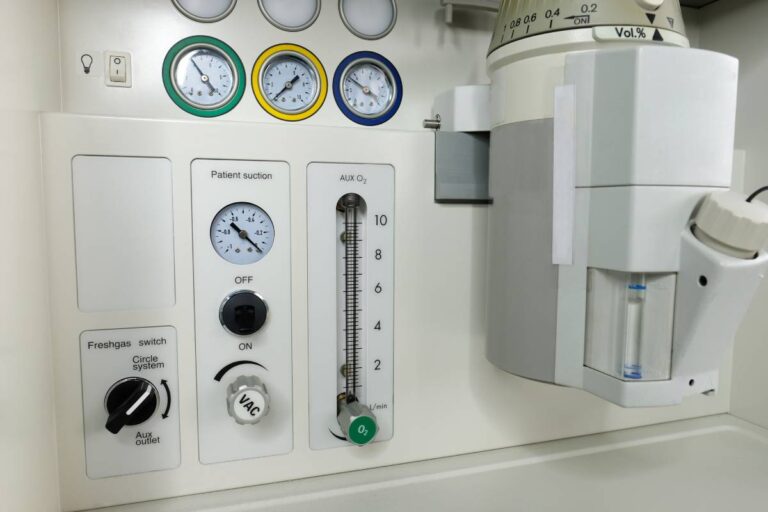Local Anesthesia Injections by Orthopedic Surgeons
Local anesthesia injections offer a safe and effective means of pain control for a wide variety of procedures that orthopedic surgeons perform. By directly injecting anesthetic agents into targeted areas, orthopedic surgeons can temporarily block nerve conduction, allowing patients to undergo surgery with minimal discomfort while remaining awake and alert. While deeper or more complex forms of anesthesia require the expertise of an anesthesiologist or nurse anesthetist, orthopedic surgeons can administer certain types of local anesthesia injections as part of the surgery. This approach is particularly beneficial for minor outpatient surgeries such as carpal tunnel release, trigger finger release, tendon repairs, and certain arthroscopic interventions. It is also a preferred option for patients with medical conditions that increase the risks associated with general anesthesia, as well as for procedures where patient cooperation is necessary or where rapid postoperative recovery is desired.
The success of local anesthesia injections used by orthopedic surgeons depends greatly on technique. Buffering anesthetic solutions, such as by adding sodium bicarbonate to lidocaine with epinephrine, can significantly reduce the pain of injection. Using smaller gauge needles, injecting anesthetic slowly and in small increments, and ensuring the needle remains within already anesthetized tissue are all strategies that minimize discomfort. Additionally, applying firm pressure and stretching the skin before injection can distract the patient’s sensory perception, further improving the experience. Mastery of these techniques not only enhances patient satisfaction but also reduces the need for supplemental anesthesia during procedures.
There are numerous advantages to using local anesthesia injections in orthopedic surgery. For some surgeries, it effectively manages pain and allows patients to remain conscious, which can reduce anxiety for patients by enabling them to communicate throughout the procedure. Recovery times are typically faster, as there are no lingering systemic effects of general anesthesia, allowing for quicker discharge and a more rapid return to daily activities. The risk profile of local anesthesia is also favorable, with a lower incidence of complications such as respiratory depression, cardiovascular instability, and postoperative nausea compared to general anesthesia. From a healthcare system perspective, local anesthesia is cost-effective, reducing both operative and recovery room times and minimizing the need for extensive postoperative monitoring. For patients, the convenience is further enhanced by the ability to travel independently to and from the surgical facility.
Despite their many benefits, local anesthesia injections by orthopedic surgeons are not without risks. Minor complications such as soreness, bruising, or temporary numbness at the injection site are relatively common but usually self-limited. More serious but rare complications include systemic toxicity, which can present with central nervous system or cardiovascular symptoms, and neurologic complications such as seizures or nerve palsies. These risks are minimized through careful technique, adherence to recommended dosing guidelines, and the use of adjuncts like epinephrine to slow systemic absorption. Allergic reactions, while exceedingly rare, can occur and typically present soon after injection. The increasing use of ultrasound guidance for injections, especially for deeper or regional blocks, has further improved the safety and precision of local anesthesia in orthopedic practice.
Recent trends in orthopedic surgery have seen a growing adoption of local anesthesia and wide-awake local anesthesia no tourniquet (WALANT) techniques. The COVID-19 pandemic accelerated this shift, as surgeons and healthcare systems sought ways to reduce hospital resource utilization and minimize patient exposure to systemic anesthetics. These approaches align with the broader movement toward outpatient care and value-based healthcare delivery.
In summary, local anesthesia injections have transformed the landscape of orthopedic surgery by providing a safe, effective, and patient-centered approach to pain management. With ongoing advances in technique, technology, and pharmacology, the role of local anesthesia in orthopedic practice is poised to expand even further, offering benefits to both patients and healthcare systems.
References
- Greene C, Droppelmann G, Fodor D, Lalonde DH. Surgeons Can Decrease the Pain of WALANT Local Anesthesia Injection if They Ask for Patient Feedback. Plast Surg (Oakv). 2025 Mar 29:22925503251327930. doi: 10.1177/22925503251327930.
- Marsh JD, Birmingham TB, Giffin JR, Isaranuwatchai W, Hoch JS, Feagan BG, Litchfield R, Willits K, Fowler P. Cost-effectiveness analysis of arthroscopic surgery compared with non-operative management for osteoarthritis of the knee. BMJ Open. 2016 Jan 12;6(1):e009949. doi: 10.1136/bmjopen-2015-009949.
- Chen CT, Chou SH, Huang HT, Fu YC, Jupiter JB, Liu WC. Comparison of distal radius fracture plating surgery under wide-awake local anesthesia no tourniquet technique and balanced anesthesia: a retrospective cohort study. J Orthop Surg Res. 2023 Oct 3;18(1):746. doi: 10.1186/s13018-023-04243-0.
- Huang YC, Chen CY, Lin KC, Yang SW, Tarng YW, Chang WN. Comparison of Wide-Awake Local Anesthesia No Tourniquet With General Anesthesia With Tourniquet for Volar Plating of Distal Radius Fracture. Orthopedics. 2019 Jan 1;42(1):e93-e98. doi: 10.3928/01477447-20181206-01.

Uses, Benefits, and Risks of Propofol for Anesthesia

Succinylcholine: Indications and Uses


What is Conscious Sedation?

Comparison of -Flurane Anesthetics

Volatile Anesthetics and Greenhouse Gas Emissions

National Anesthesia Drug Shortages

Anesthesia Incident Reporting Systems
